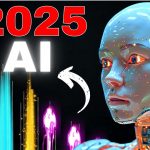The Future of Automation: Advancements in Robotics and AI
In collaboration with OpenAI, 1X has recently revealed its groundbreaking developments in the field of robotics. By showcasing a series of autonomous Android robots, capable of learning and performing tasks without human guidance, they have turned heads in the tech world.
Redefining Autonomy with Android Robots
The demonstration video released by 1X features these androids executing complex tasks in driving and object manipulation, directed by a vision-based neural network. This network processes visual input at an astonishing rate of ten hertz, enabling precise control over the robot’s movements.
What’s even more impressive is that the underlying machine learning models were trained using a large dataset compiled from 30 Eve robots. This dataset enabled the development of a versatile base model that understands various physical interactions, including domestic chores and social engagement with humans and other robots.
This training methodology, known as “software 2.0,” relies on data-driven development rather than conventional coding. It streamlines the robot’s skill acquisition process and broadens their potential utility across multiple sectors.
Augmenting Physical Labor with Intelligent Androids
1X aims to augment the availability of physical labor by deploying these intelligent and safe androids in environments built for humans. With their human-like form factor, these robots offer a new level of automated versatility and adaptability across a wide range of tasks.
By achieving full autonomy through end-to-end learning of motor behaviors, utilizing visual inputs and neural networks as the foundation, 1X aims to revolutionize industries such as manufacturing and healthcare. These androids can address labor shortages, undertake hazardous tasks, and quickly adapt to new challenges.
Compared to other humanoid robots like Tesla’s Optimus, the differences are striking. While Optimus demonstrates pre-programmed tasks and operates in controlled environments, 1X android robots achieve a deeper level of autonomy by learning and adapting from raw, real-time data.
Revolutionizing Web-Based AI Agents
In addition to autonomous robots, a new wave of autonomous web agents developed by Carnegie Mellon University is reshaping web-based AI applications. The introduction of Visual Web Arena, a benchmark that tests the capabilities of these multimodal agents, showcases the power of automating complex computer operations on the web.
Visual Web Arena focuses on realistic challenges that demand both visual and textual understanding, requiring agents to execute actions based on natural language instructions. With 910 tasks across various web environments, including Reddit, shopping, and classifieds, this benchmark uncovers the limitations of current large language model-based agents.
While previous benchmarks have overlooked the critical component of visual information processing, Visual Web Arena highlights the importance of integrating visual and textual understanding. Vision language models that excel in interpreting both visual and textual information outperform text-only models, but there’s still a significant gap between AI performance and human capabilities.
The Future of Automation: Implications and Promising Developments
As automation rapidly evolves, advancements in robotics and AI have the potential to revolutionize the way we interact with technology. By shifting towards flexible and learning-based approaches, robots can become adaptable partners, evolving alongside humans in various scenarios.
The ongoing development of autonomous robots and web-based autonomous agents marks significant progress in achieving practical and adaptable solutions. From addressing labor shortages to streamlining complex web operations, these advancements offer countless possibilities across different sectors.
While challenges lie ahead, benchmarks like Visual Web Arena will play a crucial role in driving innovation and expanding AI’s horizons. As we continue to push the boundaries of automation, the time may not be far off when robots and computers no longer depend on humans for various tasks.
Stay tuned for more updates on the exciting advancements in robotics and AI!


